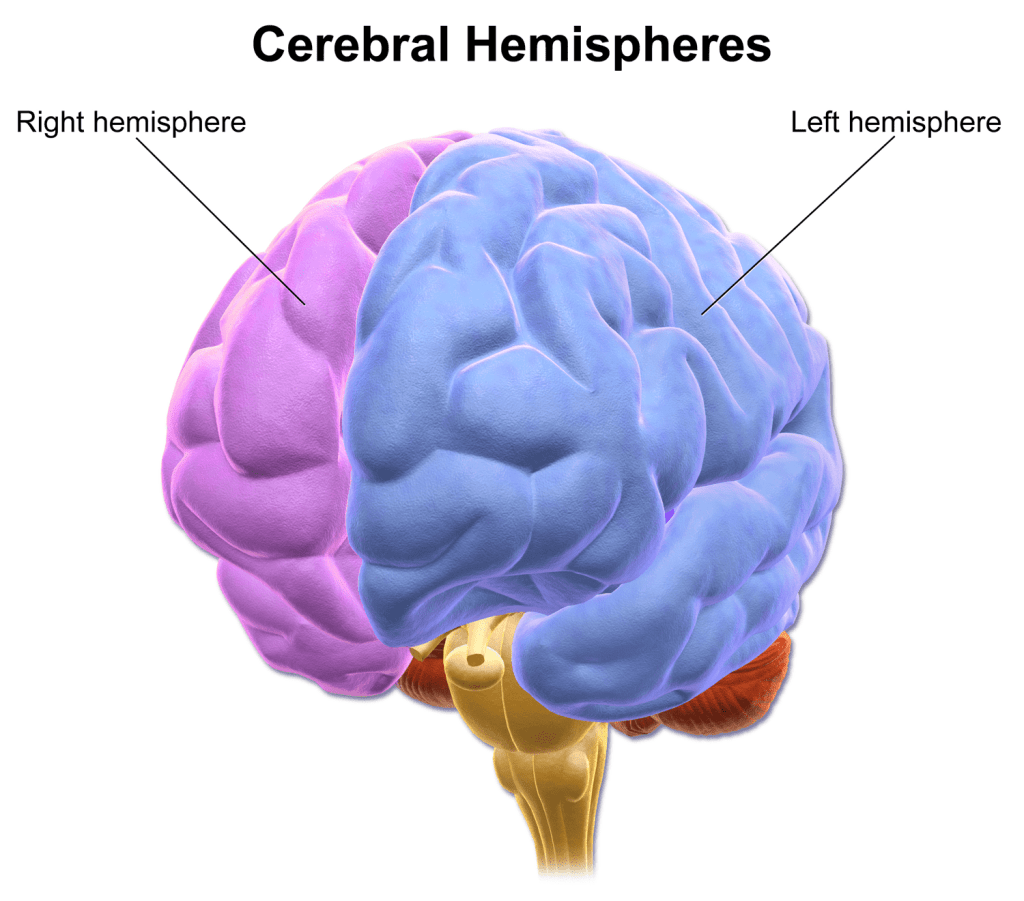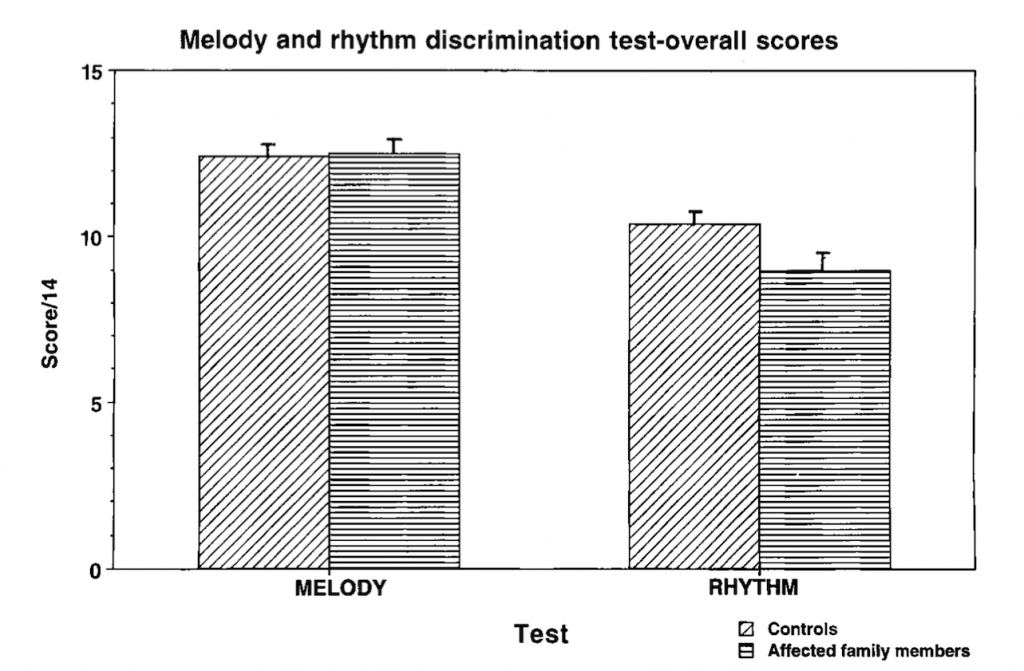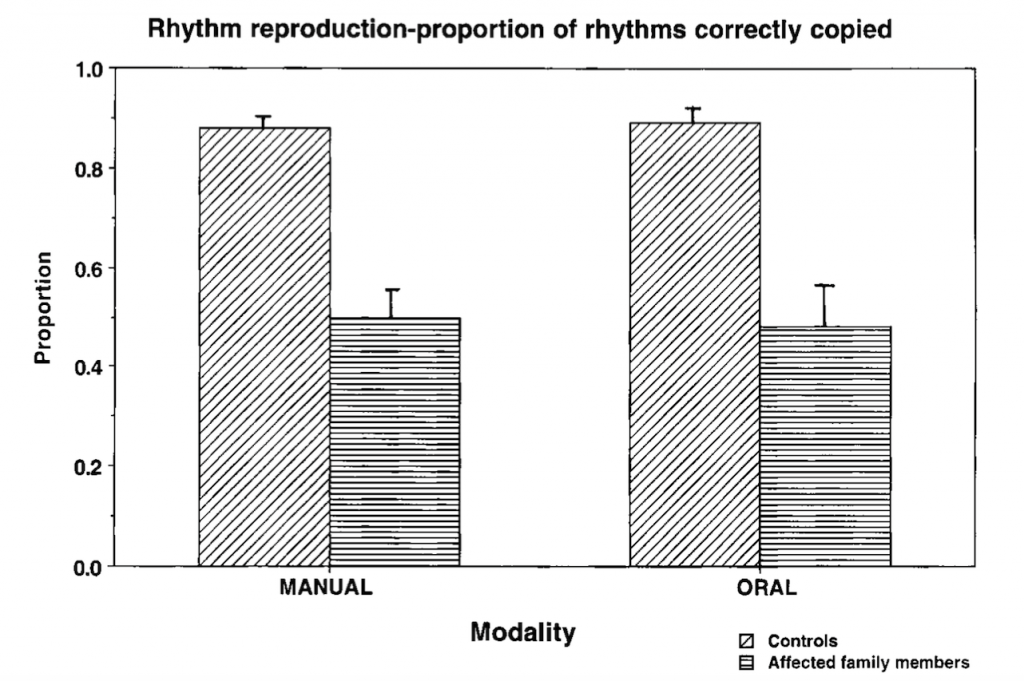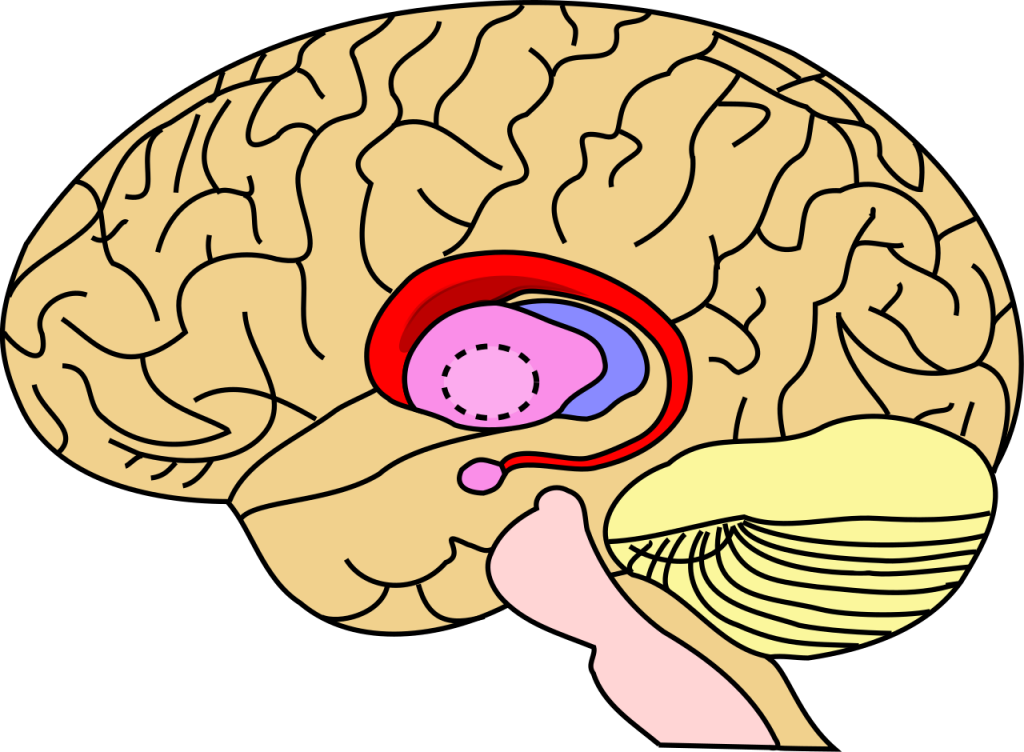
Title of paper under discussion
Pitch and Timing Abilities in Inherited Speech and Language Impairment
Authors
Katherine J. Alcock, Richard E. Passingham, Kate Watkins, and Faraneh Vargha-Khadem
Journal
Brain and Language 75, 34–46 (2000)
Link to paper (free access)

Overview
Some members of a large extended family – the ‘KE family’ – suffer from an inherited speech and language disorder, and have generously volunteered over the years to take part in scientific studies looking to investigate the causes of this impairment.
A research team from the University of Oxford, University College London and Great Ormond Street hospital approached them with a series of tasks to test their ability to produce and perceive a) pitch and b) rhythm.
Affected family members had no problem perceiving or producing pitch, whether single notes or familiar melodies. But they were deficient in the perception and production – both vocally and manually – of rhythm, suggesting that timing impairment is at the root of their linguistic deficit.

Background
Out of 30 members of the extended KE family, 15 have been diagnosed with a developmental disorder of speech and language, inherited as a dominant trait. The impairment is both expressive (making speech) and receptive (understanding speech), and afflicted members also have difficulties with nonverbal oral movements.
Aware that the perception and production of both pitch and rhythm are critical not just to musical but also to linguistic ability, our team of researchers devised tasks for the affected family members to find out if their rhythm and/or pitch processing abilities were impaired in any way.
Previous research had suggested rhythm/timing processing – especially fine-grained timing discrimination – is generally a ‘left brain’ phenomenon, in contrast to the ‘right-brained’ pitch processing. Hence the authors were keen to compare their test results with brain scans of the affected family members, looking specifically for any associated abnormalities in such pitch-processing, and/or timing-processing, areas of the brain.
Method and Results
Alongside 9 affected members of the KE family, 51 ‘control’ participants took part in this study, with age ranges matched accordingly.
The tasks fell into two groups: perception (of rhythm and pitch) and production (of rhythm and pitch).

Perception tasks
Three different sets of perception tasks were devised: pitch discrimination, melody discrimination and rhythm discrimination.
In the pitch discrimination procedure “two musical notes were presented in succession, with half the pairs being the same and with the frequency difference in the other half ranging from one semitone to a major 7th.“ After each pair of notes participants had to indicate whether the two were ‘same’ or ‘different’.
The two groups (KE family members and Controls) scored equally accurately in these tests.
In each of the melody discrimination tasks a familiar melody was played, followed either by an identical rendering or by an altered version. Again participants were asked to indicate ‘same’ or ‘different’ after each pair.
And again the two groups achieved similar levels of accuracy.
Thirdly, participants completed a rhythm discrimination task, in which “Rhythms were presented in pairs, half of which did not differ and in half of which in the second rhythm the length of notes was altered without changing the number of notes or the overall time signature.”
In this task the affected KE family members performed less well than the controls:

Production tasks
Participants underwent three different sets of production tasks: pitch production, melody production and rhythm production.
In the pitch production procedure the subject was asked to sing individual notes after the experimenter had sung them. If the answer was within a semitone it was marked as ‘correct’, otherwise ‘incorrect’. (The marking was done by ear, and then checked by a computer program).
The two groups did not differ in their overall accuracy.
In the melody production tasks participants were given the title and first line of well-known songs (chosen to be age-appropriate) then asked to sing as much as they could of that song (the notes only if they couldn’t remember the words).
Again, the two groups did not differ in overall accuracy in this task.

The rhythm production tasks came in two blocks – manual and vocal. In each block the experimenter presented 14 different rhythms, each one 4-9 notes long. In the first block the experimenter tapped out each rhythm on the table and asked the participant to manually reproduce it, also by tapping, straight after. In the second block the experimenter vocalised the rhythms to the sound of the letter ‘p’, asking the participant to repeat each one vocally. As before, each participant’s answers were assessed by ear (of the experimenter), and then checked by a computer program.
It turned out that, according to the experimenter’s aural assessments, the affected KE family members successfully reproduced fewer rhythms than the controls both manually and vocally. (The computer analysis was more forgiving, declaring that affected family members were poorer than the controls on the manual rhythms only. However the authors argue that subtleties of note beginnings and rhythmic phrasing are better perceived aurally than by their computer program, so are confident to declare the experimenter’s judgement as the more sophisticated):

Discussion
The authors conclude that “The affected family members were not impaired on any tasks involving musical intonation, but they were impaired on tasks involving the perception and production of rhythm.”
This, they declare, is in agreement with an earlier research project which observed that children with language impairment “performed more poorly on tasks involving perception of rapid timing”.
Especially interesting to our authors was the finding that manual rhythm production is impaired in the affected KE family members; such an impairment, they argue, taken together with the language impairment, rather suggests “a central deficit in the processing of timing” of these participants.
Although previous research had come to similar conclusions – that “a pervasive difficulty with temporal [timing] processing underlies specific language impairment” – this present study demonstrated such timing difficulties exist at much slower tempos than previously tested, right down to one beat/second, suggesting that the impairment may be “one of patterns of timing rather than of processing very fast stimuli”.
Regarding the possible neural basis of this family’s linguistic impairment, the authors quote a recent paper describing brain abnormalities in those family members in regions associated with timing (the head of the caudate nucleus and “many motor-related areas of the left hemisphere”). This leads them to present such brain scans as further evidence that timing impairment could be central to their symptoms.

Coda
‘Konnakkol Duet’ by Vidwan B R Somashekar Jois and Kumari V Shivapriya
Fascinating